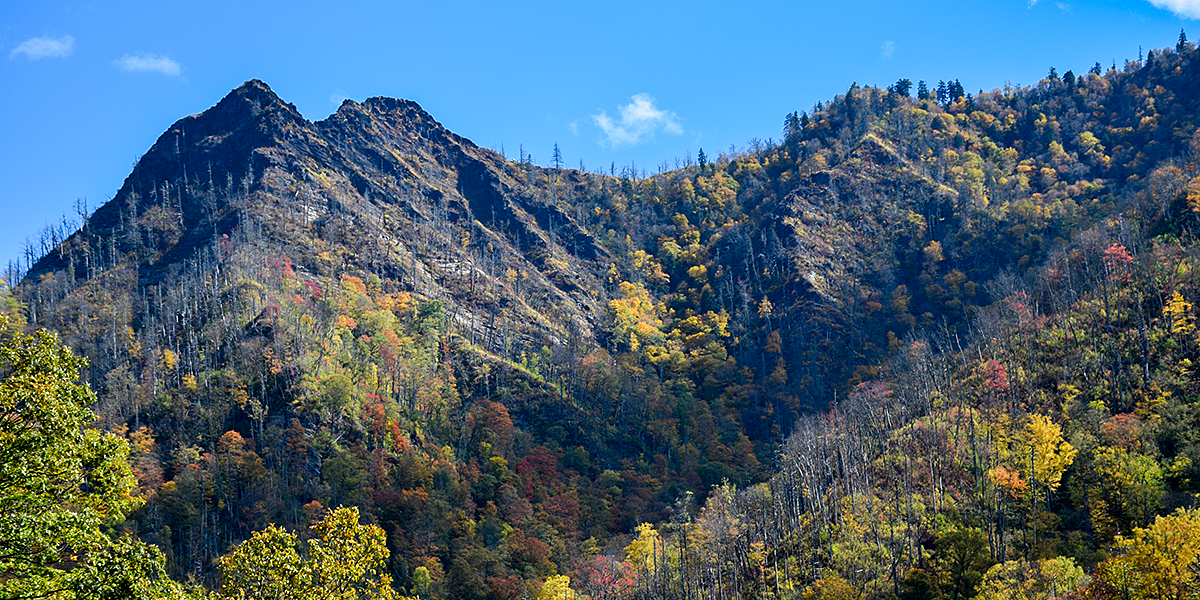
Blog for Zipline Attraction in the Smoky Mountains
Located in Pigeon Forge, TN and near Gatlinburg and Sevierville.
Exploring the Rich History of the Smoky Mountains
By Ross Bodhi Ogle
Posted on January 7, 2025

Encompassing the border between North Carolina and Tennessee, the Great Smoky Mountains National Park is a repository of natural splendor, cultural heritage, and captivating narratives. As one of the most frequented national parks in the United States, it extends beyond its awe-inspiring landscapes, offering a glimpse into the past. From the remnants of ancient human settlements to the advent of tourism in the 20th century, the park serves as a portal to history. Delving into the history of the Smoky Mountains is akin to traversing a temporal continuum, where layers of historical events, indigenous cultures, and pioneer experiences converge in a harmonious tapestry of the past.
The Ancient Origins: The Mountains' Geological History
The Smoky Mountains, a constituent of the Appalachian Mountain Range, are among the world's oldest mountain ranges. Geologists suggest that the peaks of the Smokies exceed 200 million years in age, having emerged during a period of intense geological activity. Over millennia, these mountains have been sculpted by the forces of erosion, weathering, and glaciation, resulting in the rugged terrain and misty valleys that characterize the park today.
The distinctive natural environment, characterized by its dense forests, diverse wildlife, and high biodiversity, is also attributable to the region's protracted geological history. The Great Smoky Mountains are home to over 19,000 documented species of living organisms, with scientists estimating that tens of thousands more remain undiscovered. The rich biodiversity of the region is a direct consequence of its intricate geological and climatic history.
The Indigenous People: Cherokee and Early Native Cultures
Prior to the arrival of European settlers, the Smoky Mountains were inhabited by various Native American tribes, with the Cherokee being the most prominent. The Cherokee people had a profound connection to the land, manifesting in their rich cultural traditions, spiritual beliefs, and utilization of the natural environment for sustenance and medicinal purposes.
The Cherokee referred to the Smoky Mountains as “Shaconage,” which translates to “land of the blue smoke,” derived from the frequent mist that emanates from the dense forests. The Cherokee people lived in harmony with the land, engaging in hunting, fishing, and cultivating crops such as corn, beans, and squash. They also established trade routes and villages throughout the region, utilizing the mountains as both a protective barrier and a spiritual sanctuary.
Regrettably, during the 1830s, the U.S. government's policy of forced removal, commonly known as the Trail of Tears, had devastating consequences for the Cherokee people. Many were relocated westward to reservations, resulting in the cession of their ancestral lands, including those in the Smoky Mountains, to European settlers. Nevertheless, the legacy of the Cherokee people persists in the Smoky Mountains, with numerous significant cultural sites and artifacts still evident throughout the region today.
European Settlement and the Rise of Mountain Communities
In the late 18th and early 19th centuries, European settlers embarked on a westward expansion, seeking novel opportunities in the fertile valleys and verdant forests of the Smoky Mountains. Accompanying them was a distinct lifestyle characterized by a heavy reliance on agriculture, livestock husbandry, and timber harvesting. These settlers established diminutive, self-sustaining communities, frequently isolated from the broader world due to the rugged terrain.
One of the most enduring legacies of this mountain culture was the Appalachian way of life. Families resided in log cabins, cultivated their own sustenance, and cultivated resourcefulness to endure the arduous mountain winters. They hunted wild game, fished the rivers, and gathered medicinal herbs from the forests. The homespun traditions, musical expressions, and narrative traditions of these early mountain communities would eventually become integral to Appalachian culture, exerting influence on various aspects, including country music and folk art.
Numerous small communities within the Smoky Mountains were constructed along the streams and rivers, which served as indispensable conduits for transportation, milling, and as a power source for gristmills and sawmills. The most renowned of these settlements is Cades Cove, established in the early 1800s and now one of the park's most frequented areas. The region houses a multitude of well-preserved historic structures, including log cabins, churches, and barns, providing visitors with a tangible glimpse into the lives of early settlers.
The Creation of the National Park
By the early 20th century, the Smoky Mountains had become increasingly popular with tourists, captivated by the region's natural splendor and invigorating mountain air. However, the expansion of logging and agriculture posed a significant threat to the park's distinctive ecosystem. In 1925, local citizens, conservationists, and political leaders, including John D. Rockefeller Jr., spearheaded an effort to establish a national park, with the primary objective of preserving the mountains and their wildlife for future generations.
After years of tireless lobbying and fundraising, the Great Smoky Mountains National Park was officially proclaimed in 1934. Notably, the park was established without an entrance fee, a pioneering decision that ensured its accessibility to a broader spectrum of visitors. This initiative was a component of a broader national trend towards the conservation of America's natural treasures, and the Smoky Mountains were among the initial parks established in the Eastern United States.
The creation of the park also necessitated the displacement of several mountain communities, as numerous families were compelled to relocate their residences to accommodate the park's boundaries. While this decision was deemed essential for preservation, it was an arduous and emotionally charged period for many residents, who had deep-rooted connections to the land.
A Living History: The Smoky Mountains Today
Today, the Great Smoky Mountains National Park stands as a testament to the resilience of both the land and its people. Visitors from around the world come to traverse its trails, explore its historic sites, and gain insights into the park's rich cultural heritage. The park offers a diverse array of programs and exhibits that illuminate the region's indigenous heritage, early settler life, and conservation efforts.
Cades Cove, characterized by its historic cabins and churches, remains a popular destination for visitors seeking to connect with the past. The Mountain Farm Museum provides valuable insights into early Appalachian farming practices. Furthermore, the park maintains partnerships with local Native American tribes, ensuring that the narratives of the Cherokee and other indigenous communities are preserved and honored.
The Smoky Mountains have consistently served as a sanctuary, source of inspiration, and bastion of resilience. Whether embarking on a hike to the summit of Clingmans Dome or exploring the remnants of an ancient homestead, the park offers an unparalleled opportunity to immerse oneself in the tapestry of history that has shaped this extraordinary region. The Smoky Mountains transcend their status as a natural wonder; they embody a living history, where the past and present coexist in perfect harmony. Consider booking a tour at Smoky Mountain Ziplines for a family fun filled day in the Smoky Mountains.

